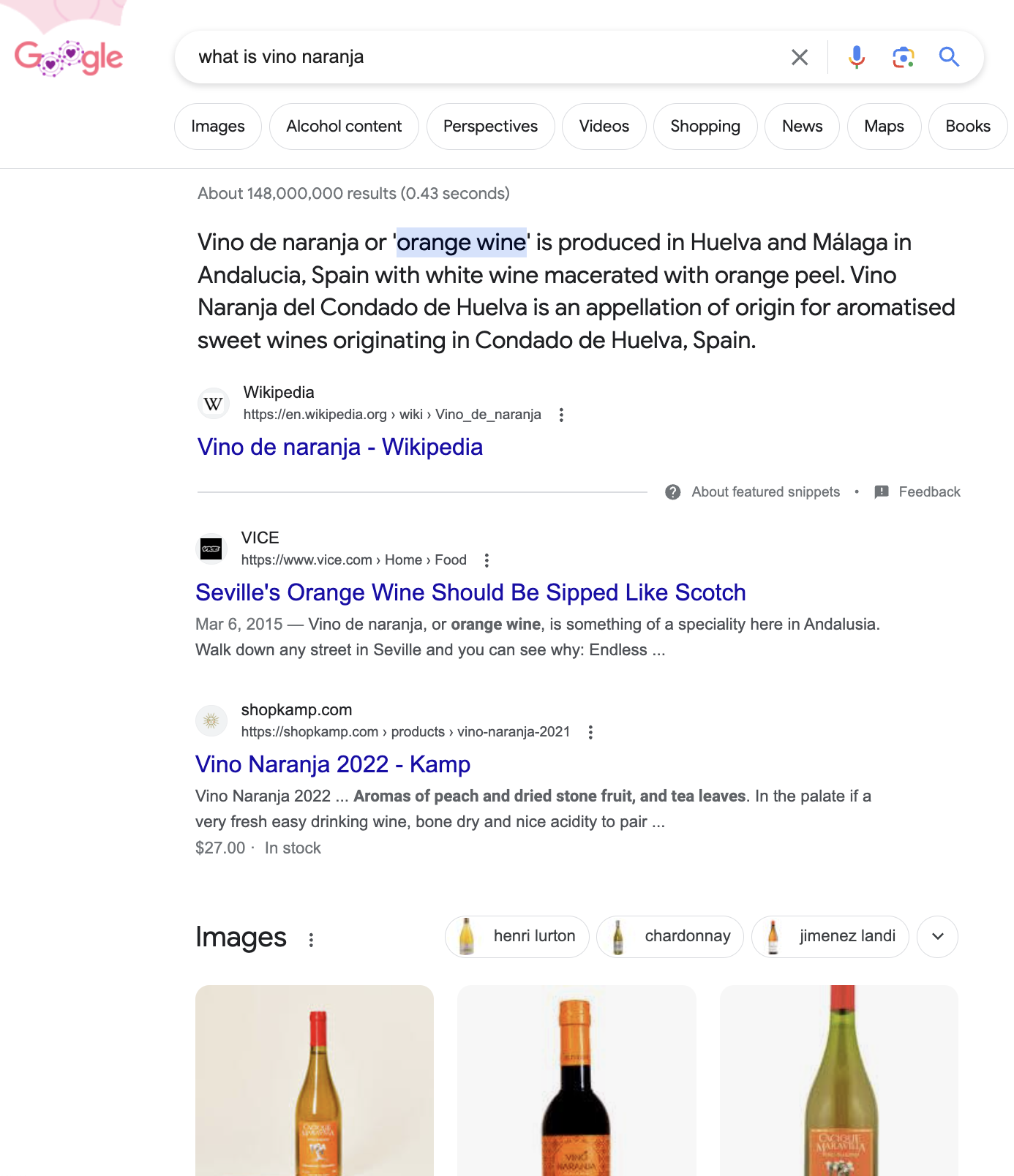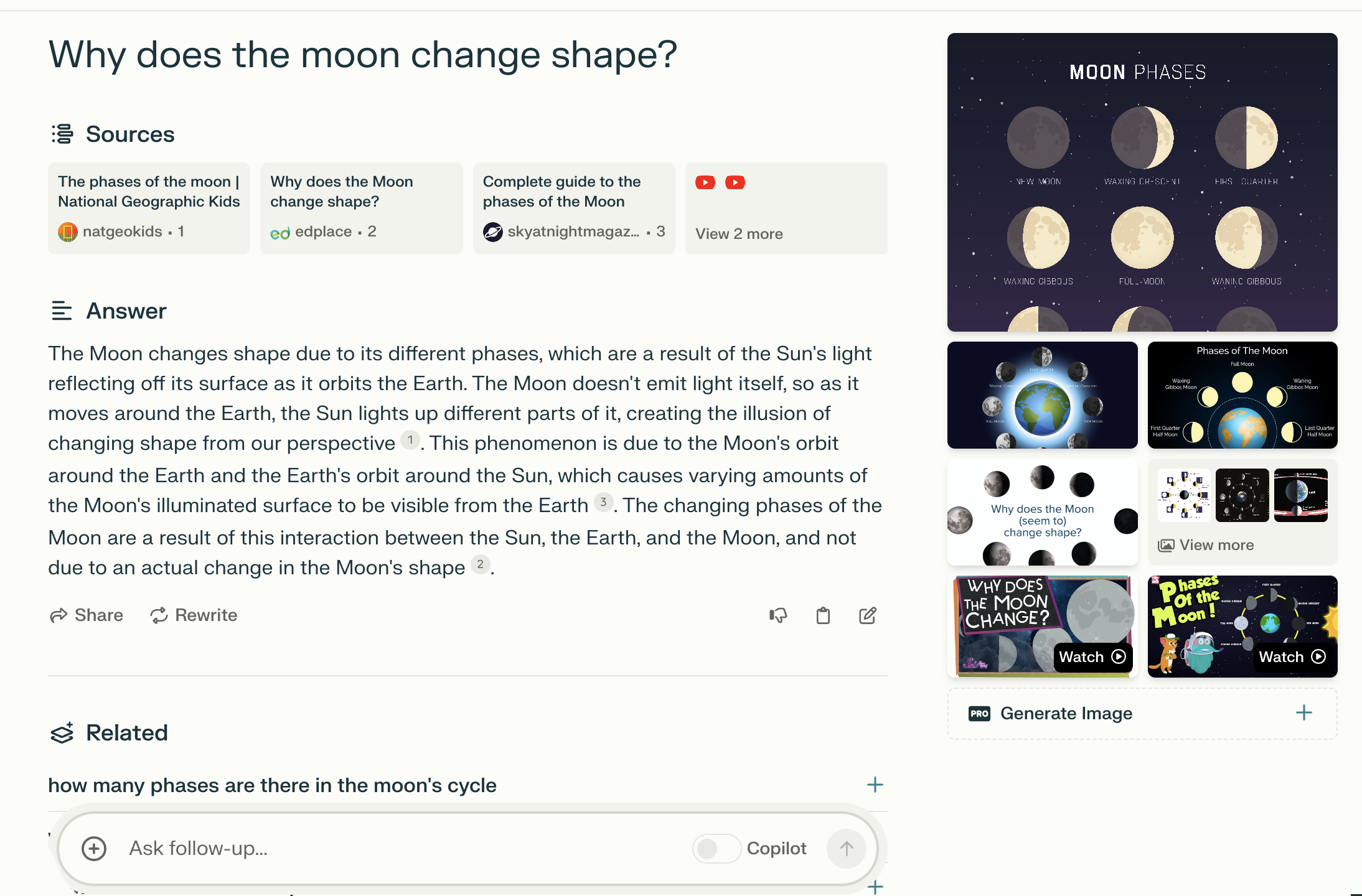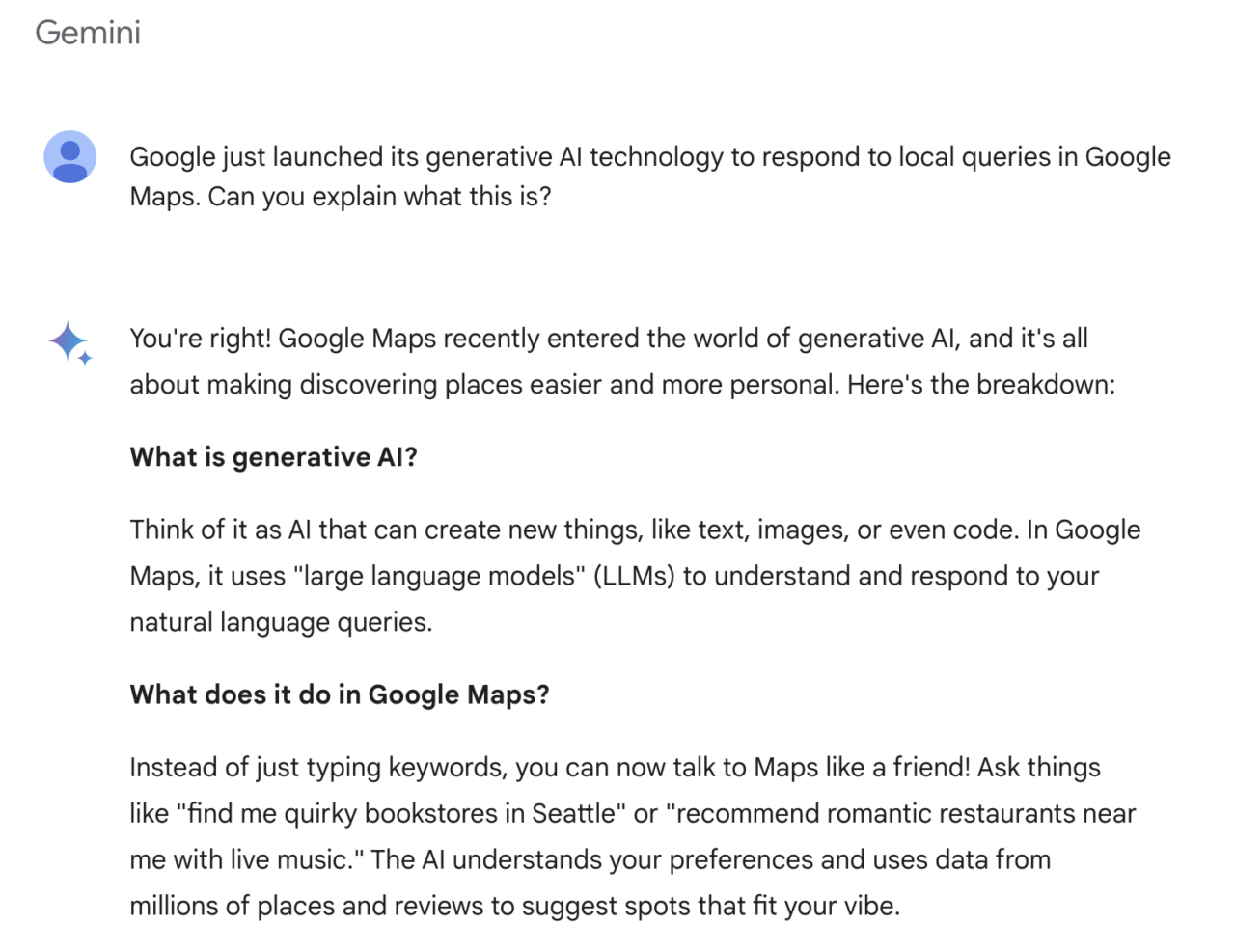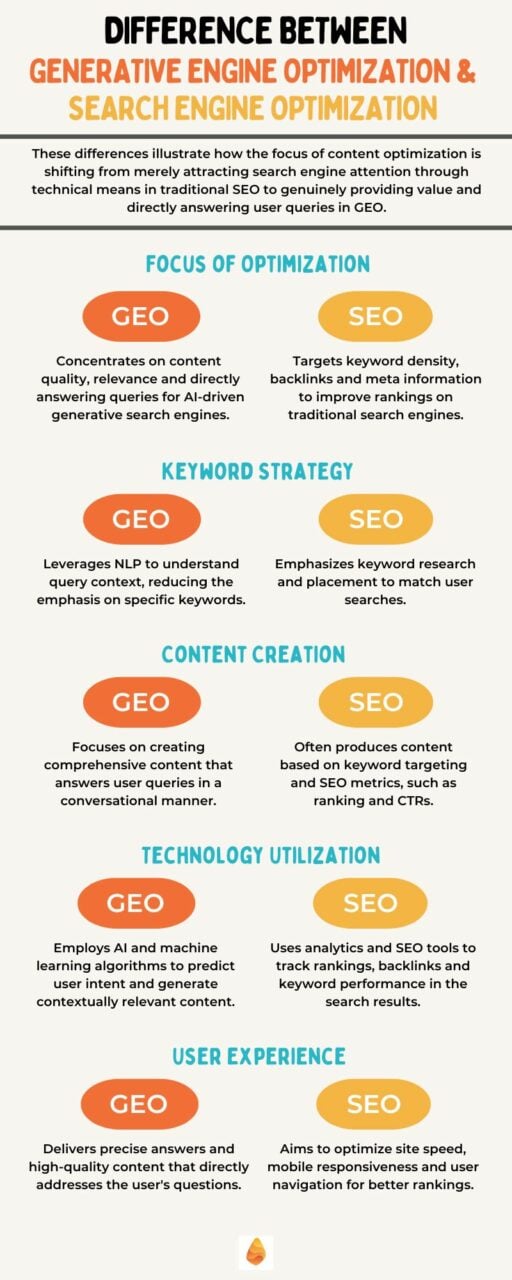Updated September 2024
I don’t have to tell you that when it comes to digital marketing, specifically SEO, new concepts and technology are always emerging. This time, it’s Generative Engine Optimization (GEO), which will fundamentally alter how we approach search engine optimization.
GEO, which combines traditional SEO with generative models for better search results, is poised to redefine content visibility in AI-generated search engine recommendations, which marks a crucial shift from traditional SEO practices.
In this post, I’ll discuss GEO and the importance of adapting to new AI-driven search algorithms and leveraging strategies such as authoritative claims, keyword stuffing, statistics inclusion, and fluency optimization.
TABLE OF CONTENTS:
The Evolution of Search: SEO to SGE to GEO
To fully understand Generative Engine Optimization, I think it’s good to see it in the context of the progression of how digital content interacts with search technologies, especially with the integration of artificial intelligence:
SEO (Search Engine Optimization):
- Definition: The practice of optimizing websites to rank higher in search engine results pages and attract more organic traffic. Traditional SEO focuses on understanding search engine algorithms and optimizing content accordingly, using keywords, meta tags, backlinks and other strategies.
- Era: Dominant in the early stages of the internet and web search engines, continuing to be fundamental today.
- Objective: To increase a website’s visibility and user traffic by aligning content with what search engines deem valuable.

SGE (Search Generative Experience):
- Definition: Enhancing the search experience using generative AI technologies to provide more relevant, contextual, or comprehensive responses to queries. SGE involves AI to directly generate answers, summaries or even conversational interactions based on user queries.
- Era: Emerges with the advancement of AI and machine learning technologies, offering a more dynamic and interactive search experience.
- Objective: To make search more efficient and user-friendly by leveraging AI to understand and anticipate user needs better.

GEO (Generative Engine Optimization):
- Definition: The adaptation of content optimization strategies to align with the capabilities and expectations of AI-driven search engines. GEO combines traditional SEO techniques with an understanding of how generative AI models process and prioritize content.
- Era: Represents a more recent phase, acknowledging the significant role of AI in shaping search experiences and the necessity for content to be optimized for these AI-driven environments.
- Objective: To ensure content is discovered, accurately interpreted and favorably ranked by AI-enhanced search engines.

It might be helpful to further drill down on the differences between Search Engine Optimization, Search Generative Experience and Generative Engine Optimization:

In a nutshell, you could say that:
- From SEO to SGE: This transition reflects a shift from purely algorithmic search optimization towards enhancing the search experience with AI, focusing on user interaction and satisfaction.
- From SGE to GEO: This step acknowledges the pervasive influence of AI on search technologies, necessitating a new approach to content optimization that goes beyond traditional SEO to include AI-specific considerations.
What Is Generative Engine Optimization (GEO) and How Does It Work?
First of all, I want to note that this post is inspired by a 19-paged research paper called GEO: Generative Engine Optimization. In order to cut down on linking to this doc a dozen times, just know that if something is in quotation marks, it’s from this source.
So, the emergence of generative engines is quite a significant evolution in the field of search engines. Unlike traditional search engines, which primarily provide a list of relevant websites, generative engines go a step further by generating multimodal responses synthesized from multiple sources.
Overview of Generative Engine Optimization (GEO):
- Concept: GEO refers to the optimization of online content for better visibility and performance in search engines that use generative AI technologies. This could involve understanding how generative AI models interpret and prioritize content and then tailoring content to align with those parameters.
- Applications: This includes optimizing content to be more easily summarized by AI, ensuring that content is structured in a way that generative models can understand and prioritize, or creating content that answers questions more directly to be favored by AI-driven query responses.
- Focus: The focus of GEO is on content creators and marketers aiming to improve their content’s performance in search results in an era where search engines leverage AI for generating responses.
“The recent success of large language models (LLMs) however has paved the way for better systems like BingChat, Google’s SGE, and perplexity.ai that combine the strength of conventional search engines with the flexibility of generative models. We dub these new age systems generative engines (GE) because they not only search for information, but also generate multi-modal responses by synthesizing multiple sources.”
Here’s a look at perplexity.ai, a chatbot-style search engine:


In other words, this approach combines the power of conventional SEO techniques with the flexibility and sophistication of generative engines, such as Google’s Search Generative Experience (SGE).
What I think is interesting is when you look at this picture below: On the left side this is what a traditional search engine looks like when you search, for example, for things to do in New York. The number one result is Central Park in New York, number two is the Statue of Liberty, and the third result is New York style pizza. So you get the the typical 10 blue links, as we are all familiar with:

But now they’re saying it’s going to change a little bit with the generative engine, so it’ll be more like Hey, here are all the things you can do in New York! Check out this pizza place, or you could go visit Central Park, or whatever.
So your search becomes more of a conversation.
Now, what this research paper is basically saying is: We think search is going this way so we should optimize our websites for generative search results.
Just want someone to do all the work for you? Single Grain’s SEO AI experts can help!👇
Optimizing for ChatGPT and Gemini
The advent of large language models like ChatGPT and Gemini has introduced a new era of search engines that synthesize information from various sources to provide comprehensive, conversational responses.

Optimizing your content for ChatGPT and Gemini can significantly enhance your visibility, and for these generative engines, optimizing involves tailoring your content to be more persuasive, authoritative and rich in relevant keywords and statistics.
In this new era of SEO, i.e. GEO, successfully getting these AI tools to recommend your products or services can lead to increased business. Our experience confirms that adopting GEO strategies has already attracted clients seeking to boost their AI recommendations.
When it comes to GEO, brand mentions and relevancy play a pivotal role in determining search engine rankings.
NP Digital has already looked at factors that are causing ChatGPT and Gemini to recommend sites. Keep in mind that if you want to optimize for ChatGPT you have to wait for their index to pretty much just update.
So they looked at over 82 ranking factors and found that relevancy, which has a lot to do with keywords and brand mentions (i.e. an article about the best headphones mentions your brand), were the two big factors on them recommending you.

This underscores the importance of establishing a strong online presence, fostering brand recognition and improving their position in the AI-driven search landscape.
Performance Metrics: Winner Takes All
The research document proposes impression metrics tailored specifically for generative engines, providing a framework for evaluating the effectiveness of Generative Engine Optimization strategies.

You can see in the chart above that for no optimization, the overall position is 19.3 in terms of subjective impressions. So the most important things would be around adding quotations, citing sources, adding statistics, fluency optimization, including technical terms, being authoritative, and making it easy to understand.
Overall what they’re saying is: The best performing methods improve upon baseline by 41% and 29% on Position-Adjusted Word Count and Subjective Impression respectively.
Strategies for Success: Optimizing with GEO
In the realm of AI-generated recommendations, the competition is fierce, with the top-ranked responses capturing the lion’s share of visibility. This “winner takes all” scenario accentuates the need for a meticulously optimized presence so that your content not only ranks but dominates in the generative search engine landscape.
The evidence suggests that employing GEO strategies can lead to an average 30% improvement in impressions.
This significant uplift underscores the effectiveness of adapting content to meet the criteria favored by generative engines, highlighting the importance of authoritative sources, statistical data and clear, fluent language in enhancing content visibility.
The research paper says that “to improve the impression metrics, content creators need to make changes to their websites…. A well-designed GEO method should increase the visibility of the website on which it is applied….”
So these are not necessarily new concepts; at the end of the day, it’s just about good writing. To flesh this out a bit, here are a variety of optimization strategies that content creators must employ (taken from the paper’s suggestions):
- Keyword Enhancement: Integrate relevant keywords throughout your content to align with classical SEO practices. Just maintain a natural flow and readability to avoid penalties for over-optimization.
- Cite Sources: Enhance the credibility of your content by citing reliable sources. This practice not only validates your claims, but also connects your content with established research or facts.
- Statistics Addition: Incorporate quantitative data to support your arguments. Using hard numbers can strengthen your points and make your content more convincing and informative.
- Quotation Addition: Include pertinent quotations from experts or relevant sources to add depth and authority to your content. This can also provide a diverse perspective to your audience. For instance, here’s a useful quote from the GEO research paper:
“Interestingly, websites that are ranked lower in SERP, which typically struggle to gain visibility, benefit significantly more from GEO than those ranked higher.… [It] led to a substantial 115.1% increase in visibility for websites ranked fifth in SERP.”
- Easy to Understand: Simplify complex concepts into understandable language. Making your content accessible to a broader audience increases engagement and reduces bounce rates.
- Fluency Optimization: Make sure that your website’s text flows smoothly and is free from grammatical errors. Well-crafted sentences enhance readability and user experience.
- Unique Words: Enrich your content with specific and non-clichéd vocabulary to stand out. This can improve your content’s uniqueness and make it more engaging and memorable.
- Technical Terms: When appropriate, incorporate technical terms to showcase expertise in your subject matter. This can help in targeting a more specialized audience and improving SEO for niche queries.
- Authoritative Content: Elevate your content by infusing it with persuasive language and authoritative claims. This establishes credibility and trust with your audience, making your website a go-to source for information in your field.

As mentioned, these methods are not groundbreaking in isolation but they do represent a refined approach to content creation that emphasizes quality, relevance and authority.
Here are some performance improvement stats from GEO optimization, where additions are green and deletions are red. Without adding any substantial new information in the content, GEO methods are able to significantly increase the visibility of the source content.

Difference Between Generative Engine Optimization and Traditional SEO Techniques
The difference between Generative Engine Optimization and traditional SEO is pretty significant, so here’s a quick comparison:
- Focus of Optimization:
- Traditional SEO: Targets keyword density, backlinks and meta information to improve rankings on traditional search engines like Google.
- GEO: Concentrates on content quality, relevance and the ability to directly answer queries, optimizing for AI-driven generative search engines.
- Keyword Strategy:
- Traditional SEO: Emphasizes keyword research and placement to match user searches.
- GEO: Leverages natural language processing to understand query context, reducing the emphasis on specific keywords.
- Content Creation:
- Traditional SEO: Often produces content based on keyword targeting and SEO metrics.
- GEO: Focuses on creating comprehensive, engaging content that answers user queries in a conversational manner.
- Technology Utilization:
- Traditional SEO: Uses analytics and SEO tools to track rankings, backlinks and keyword performance.
- GEO: Employs AI and machine learning algorithms to predict user intent and generate contextually relevant content.
- User Experience:
- Traditional SEO: Aims to optimize site speed, mobile responsiveness and user navigation for better rankings.
- GEO: Prioritizes delivering precise answers and high-quality content that directly addresses the user’s needs and questions.
These differences illustrate how the focus of content optimization is shifting from merely attracting search engine attention through technical means in traditional SEO, to genuinely providing value and directly answering user queries in GEO.

Last Word on Generative Engine Optimization (GEO)
As we stand on the brink of a new age in digital search (again), it’s clear that generative engines and Generative Engine Optimization are reshaping the way content is discovered and consumed.
As content creators and marketers adapt to these changes, the focus must remain on producing high-quality, authoritative content that resonates with both generative engines and human audiences alike. The strategies outlined here serve as a foundation for understanding and leveraging the capabilities of these advanced systems.
The journey into GEO is just beginning, and its evolution promises to bring further innovations and challenges in the quest for digital visibility.
If you’re ready to level up your online visibility with the power of AI to optimize your content, Single Grain’s SEO AI experts can help!👇
Recommended Video
For more insights and lessons about marketing, check out our Marketing School podcast on YouTube.
Generative Engine Optimization (GEO) FAQs
-
What is generative search optimization?
Generative Engine Optimization (GEO), sometimes written as Generative Search Optimization, refers to the practice of optimizing content to rank higher in the results of AI-driven search engines that synthesize information from multiple sources to answer queries. It involves tailoring content to be more authoritative, engaging, and informative, leveraging the capabilities of generative AI technologies.
-
What does GEO mean in SEO?
In the context of SEO, GEO typically refers to geographical optimization, targeting content and keywords to specific locations. However, with the advent of AI-driven search engines, GEO also represents Generative Engine Optimization, focusing on enhancing content for AI-generated search responses.
-
What is GEO optimization?
GEO optimization, or Generative Engine Optimization, focuses on fine-tuning web content to enhance its performance and visibility on AI-driven search platforms. This involves creating content that is authoritative, engaging, and rich in information, tailored to meet the criteria of AI algorithms that generate search responses by synthesizing data from various sources.
The goal of GEO is to ensure content not only reaches its intended audience effectively but also stands out in the competitive digital landscape dominated by generative AI technologies.
-
What is the difference between SEO and GEO?
SEO focuses on optimizing content to rank higher in traditional search engines like Google, using techniques such as keyword optimization.
GEO optimizes for generative search engines, which use AI to produce contextually relevant responses.
SEO emphasizes keyword stuffing and technical factors, while GEO prioritizes content quality and the ability to answer queries conversationally, catering to AI search engines.
-
Can you use AI to do SEO?
Yes, AI enhances SEO by automating tasks like keyword research and content optimization for traditional search engines. AI tools analyze data to predict keyword effectiveness and generate content that not only targets keywords but is engaging and informative, aligning with both SEO and GEO principles.
-
How does generative AI affect SEO?
Generative AI shifts SEO focus towards content quality over keyword stuffing, understanding user intent and generating relevant responses. This requires adapting SEO strategies to prioritize comprehensive and accurate information, catering to generative search engines.
Generative engine responses emphasize content’s usefulness, blending SEO and GEO towards a unified goal of serving users’ needs effectively.



